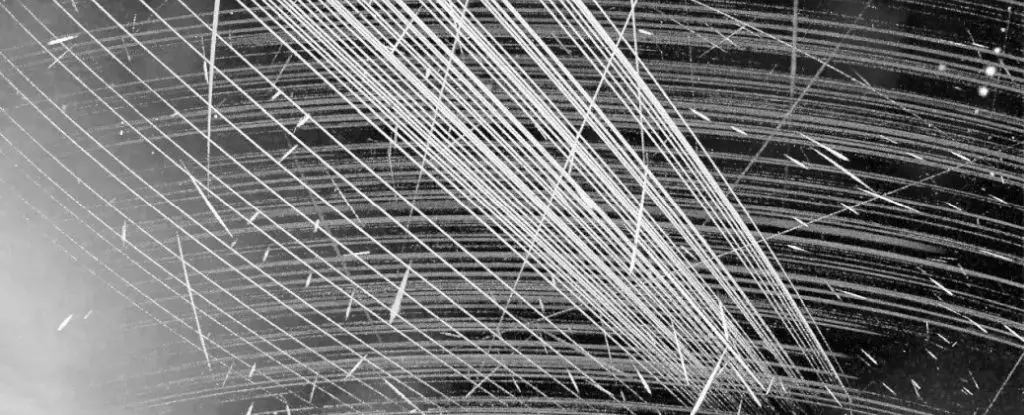As the final frontier becomes increasingly populated, humanity finds itself at a crossroads concerning our celestial environment. The technological race for satellite services, spearheaded by companies like SpaceX, OneWeb, and Amazon, introduces significant challenges to our observational capabilities of the universe. This article scrutinizes the alarming implications of satellite swarms leaking radiation within vital radio frequency ranges intended for scientific inquiry, particularly radio astronomy.
Recent data indicate that SpaceX’s second generation of Starlink satellites—dubbed v2mini and v2mini Direct-to-Cell—are emitting radiation volumes that are radically higher than their predecessors. Specifically, these satellites leak as much as 32 times more radiation, directly impacting radio wavelengths reserved for scientific research and exploration. Experts, including astronomer Cees Bassa from the Netherlands Institute for Radio Astronomy (ASTRON), express deep concern about the ramifications of this increased radiation. They note that the electromagnetic noise from these satellites now overwhelms even the faintest astrophysical signals, becoming painfully evident in the observations made by LOFAR, a sophisticated radio observatory network.
The level of interference posed by these swarms is staggering. Bassa’s statement that Starlink emissions are “10 million times brighter” than faint astronomical sources parallels the difference between dim celestial objects and the blinding brightness of the full Moon. This escalating issue poses a significant threat not only to radio astronomy but to our collective understanding of the cosmos.
The repercussions of these satellite emissions extend beyond electromagnetic interference. As the number of satellites in low-Earth orbit surges—currently standing at over 6,398 for Starlink alone—so does the risk of visible light pollution. These satellites leave noticeable streaks across the night sky, disrupting celestial observations that have been a cornerstone of human curiosity for centuries. Observatories are becoming increasingly hampered in their mission to study the universe, signaling a pressing need for regulation.
However, visible light is not the only form of pollution that should concern us. The underlying disruption in radio wavelengths utilized for communication further complicates the landscape of cosmic observation. Studies conducted with LOFAR show that these satellite constellations are extending their interference into radio frequencies outside permissible ranges, especially in the crucial spectrum earmarked for radio astronomy research.
Currently, the framework surrounding satellite emissions lacks rigorous regulation. The absence of established guidelines has prompted researchers and astronomers to advocate for swift implemention of policies aimed at mitigating this unintended radiation. While the emissions from a single satellite may appear negligible, the cumulative effects of thousands of satellites in orbit can compound to create an overwhelmingly bright background noise, eroding the fabric of radio astronomy as we know it.
Experts emphasize that it is imperative for companies like SpaceX to leverage their capabilities for data analysis, identify the radiation sources from their satellites, and work towards effective solutions. With the satellite industry rapidly expanding—Amazon eyeing over 3,000 satellites and China’s Spacesail Constellation planning 15,000—the urgency for both regulation and technological solutions becomes even more critical.
The importance of radio astronomy extends beyond the confines of scientific research. The innovations and technologies that emerge from the study of the cosmos have historically translated into invaluable advancements on Earth—ranging from Wi-Fi and GPS systems to medical imaging techniques. Compromising the integrity of radio astronomy could yield unforeseen ramifications for technological progress and our understanding of the natural world.
Federico Di Vruno, an engineer at the SKA Observatory, underscores the significance of taking proactive measures. He points out that if satellite companies prioritize minimizing unintended radiation as part of their sustainability policies, they have a unique opportunity to pave the way for responsible practices.
Humanity stands at a pivotal moment where the balance between technological advancement and the preservation of our scientific heritage is increasingly vulnerable. The challenges presented by satellite swarms require not just attention but immediate action from regulators, researchers, and industrial stakeholders alike. Jessica Dempsey, ASTRON’s general and scientific director, aptly concludes that it is essential for both the industry and regulators to engage in a dialogue that addresses these pressing concerns. Failure to act could dim the stars we long to understand, leaving future generations without the means to explore the wonders of our universe.


Leave a Reply